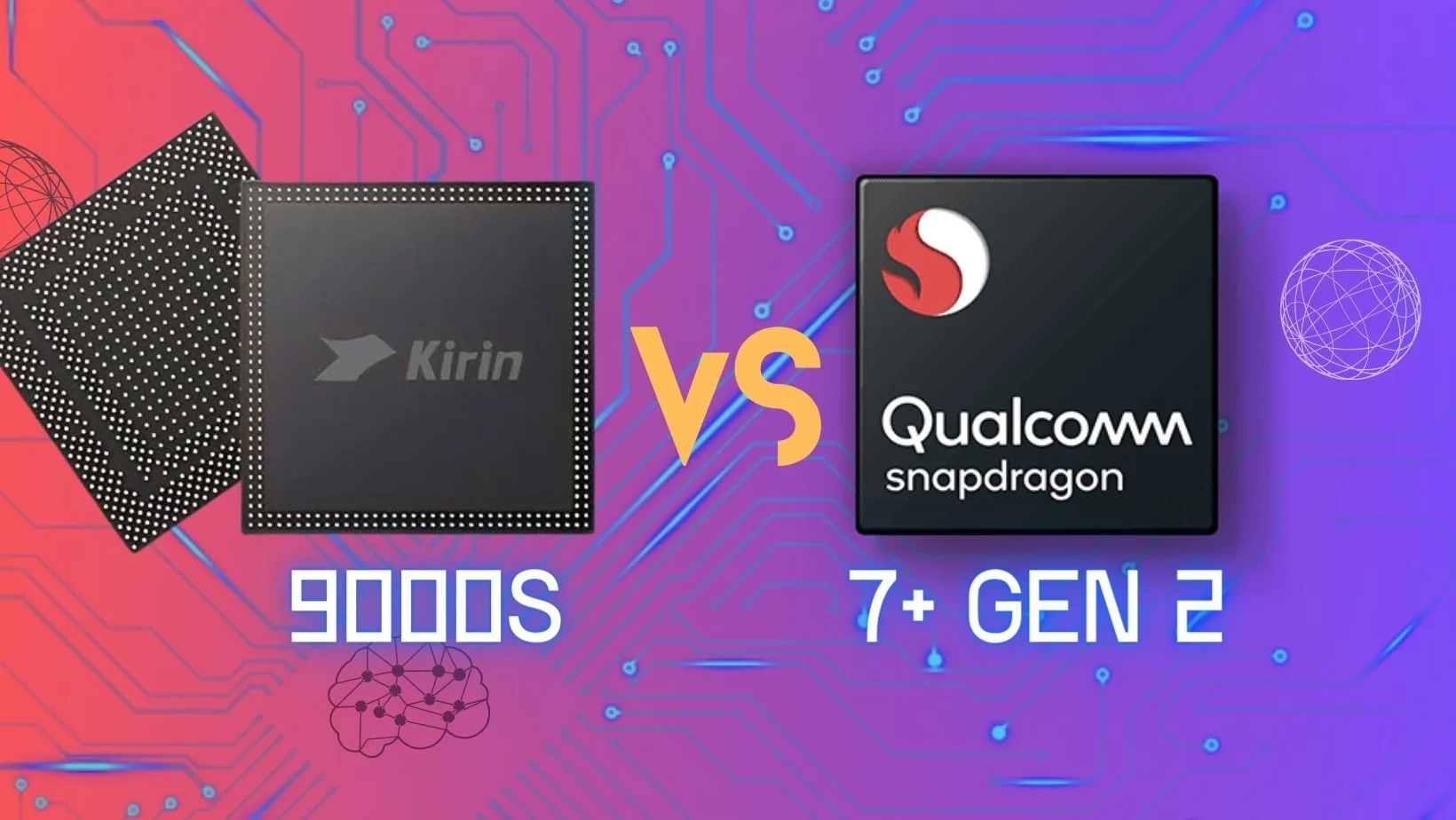Kirin 9000S vs Snapdragon 7+ Gen 2: Midrange vs Flagship
Huawei have bounced back with a new 5G Flagship SoC, the Hisilicon Kirin 9000S. However the question still remains, how well does it perform against other high-end processors? To test it, we'll have it go up against the Snapdragon 7+ Gen 2. Which SoC is going to be the better one?
Huawei marked a significant return to the market in September 2023 with the introduction of their first System-on-Chip (SoC) in three years. This development has raised questions about the SoC's standing in comparison to other SoCs within its class. In this analysis, we will examine how it performs against Qualcomm's Snapdragon 7+ Gen 2.
The HiSilicon Kirin 9000S, unveiled in August 2023, signifies Huawei's determined reentry into the competitive market. This flagship-grade SoC is a part of the HiSilicon Kirin family, exclusively designed for Huawei smartphones. The Kirin 9000S has already been introduced with the Huawei Mate 60 Pro.
The Snapdragon 7+ Gen 2 is a relatively new offering from Qualcomm, announced in March 2023. Although categorized as a midrange SoC, its performance defies typical midrange expectations. Reviews affirm that this SoC is indeed a formidable contender even in flagship territory.
However, due to its novelty, it has yet to be widely adopted by smartphone manufacturers. Nevertheless, it has already found its way into smartphones like the Poco F5, Redmi Note 12 Turbo, and the Realme GT Neo 5 SE.
With this context in mind, we can proceed to the detailed comparison of these two SoCs.
» See: Kirin 9000S vs Snapdragon 7+ Gen 2 - Full Specs Comparison
Performance on the Kirin 9000S vs Snapdragon 7+ Gen 2
In terms of performance, the Snapdragon 7+ Gen 2 distinctly outshines the Kirin 9000S. Its four performance CPU cores (1x Cortex X2 + 3 Cortex A710) are notably superior to the performance cores found in the Kirin 9000S.
This performance discrepancy is reinforced by benchmark tests. The Snapdragon 7+ Gen 2 outperforms the Kirin 9000S in AnTuTu 10 (1.1 million to 900,000) and GeekBench 6 (4,445 to 3,630).
Gaming on the Kirin 9000S vs Snapdragon 7+ Gen 2
When it comes to gaming and graphics-related tasks, the superiority of the Snapdragon 7+ Gen 2 becomes evident once again. Equipped with an Adreno 725 GPU, it outperforms the Kirin 9000S with its Mali G910 GPU. Furthermore, game developers often optimize their software for Snapdragon SoCs, resulting in smoother and enhanced gaming experiences.
RAM and Storage
Both SoCs utilize LPDDR5 RAM technology, capable of accommodating up to 16GB of RAM. While the Snapdragon 7+ Gen 2 boasts faster RAM, the Kirin 9000S supports more substantial memory configurations.
For storage, the Kirin 9000S offers support for UFS 4.0, while the Snapdragon 7+ Gen 2 employs UFS 3.1.
Camera and Video
In terms of camera capabilities, the Kirin 9000S reaches a maximum camera resolution of 50MP, while the Snapdragon 7+ Gen 2 supports camera resolutions as high as 200MP. Both SoCs can record 4K video at a smooth 60fps and playback video at the same rate.
Connectivity
Both SoCs offer robust connectivity options, supporting 2G, 3G, 4G, 5G, and WiFi 6. It's worth noting that Huawei has yet to disclose details about its 5G architecture. On the other hand, the Snapdragon 7+ Gen 2 utilizes the widely recognized Snapdragon X65 5G modem and benefits from superior Bluetooth 5.3 support.
Battery Life
In terms of battery life, the Snapdragon 7+ Gen 2 has a significant advantage. It is built on an advanced 4nm TSMC process, whereas the Kirin 9000S relies on a dated 14nm SMIC process. Consequently, the Snapdragon 7+ Gen 2 offers substantially longer battery life compared to the Kirin 9000S.
Conclusion
The comparison between the Kirin 9000S and the Snapdragon 7+ Gen 2 reveals that the latter outperforms the former across various key aspects, including performance, gaming capabilities, RAM, and battery life. Despite its ambitions, the Kirin 9000S faces stiff competition from Qualcomm's Snapdragon 7+ Gen 2, which establishes itself as a formidable midrange SoC, if not a bonafide flagship contender.
